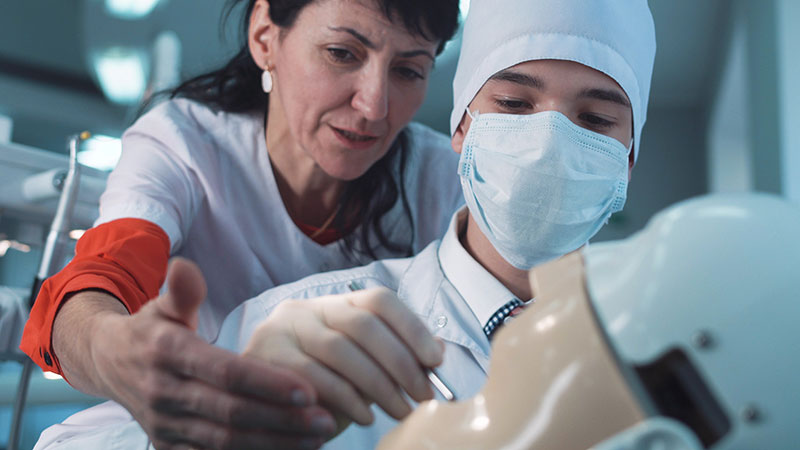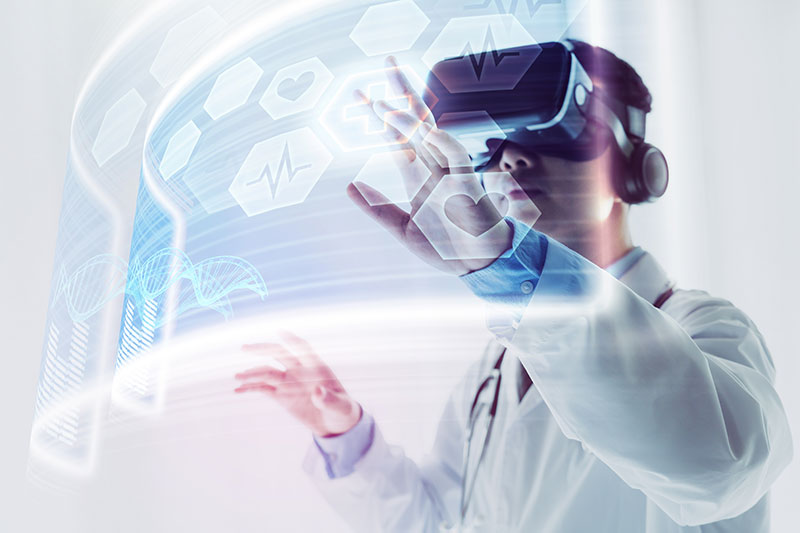Augmented reality and virtual reality technologies are making it possible to better learn hands-on procedures and techniques in modern dental education.
By Steven Tuggle, DMD
Led by advancements in information technology, this past decade has brought exciting new innovations to the world of dentistry. These solutions include digital x-rays, Cone-Beam Computed Tomography, CAD/CAM technology, fluorescence imaging, digitally guided implant placement, digital patient charts, and remote consultations.

Today, dentistry and dental education are on the precipice of a technological evolution, thanks to augmented reality and virtual reality. While dental students use digital textbooks, view digital x-rays, and review 3D digital images, there’s still a need to acquire the knowledge and skill to perform dental procedures in the real world.
This is why the most effective dental schools and continuing dental education providers teach dentists through the combined use of technology and hands-on practice. Dental educators have made great strides and advanced oral healthcare through these hybrid teaching methods.
This adaption in education can be seen in the dental school laboratory or in a hands-on CE course, where a high student-to-teacher ratio can hinder learning and skill acquisition. The transfer of knowledge and skill from the teacher to the student requires a certain amount of one-on-one attention. With the addition of technology such as AR/VR in dental education, that now becomes much easier, especially for classrooms with a higher student-to-teacher ratio.
Augmented Reality (AR)
Augmented reality (AR) is a technology in which the user’s interaction with the real world becomes enhanced through computer-generated information and graphics. The result is a virtual world in which the viewer sees a combination of reality and digital data with the potential to affect all the senses: sight, touch, hearing, and even smell and taste.
Learning dental procedures most often begins with reading about the procedure. However, transferring this two-dimensional knowledge into a three-dimensional skill can present challenges. Dental students realize this when trying to cut their first Class I cavity preparation the day after reading about it in their operative textbooks. The student-teacher ratio can be a significant barrier if the student needs attention during the actual laboratory session designed for learning this skill.
AR overcomes this barrier with the use of a dental simulator. The simulator consists of a manikin containing plastic teeth. The manikin and the handpiece both contain infrared emitters followed by the simulator’s camera. Optically tracked movement of the handpiece provides instant feedback of the student’s accuracy during the procedure. This shortens the learning curve as students correct mistakes quickly and precisely.
Virtual Reality (VR)
Whereas AR augments the real world with additional information, graphics, sounds, and more, virtual reality (VR) replaces the real world with an entirely computer-generated world, and surrounds the user 360 degrees with a 3D virtual world—no patient needed. Students can benefit from VR by learning and practicing the required hand-eye coordination and dexterity needed to move past the pre-clinical virtual setting and work on actual patients. VR simulators have even shown promise in aiding the teaching of highly complicated procedures such as the Le Fort I osteotomy.

VR technology allows students to learn and practice dental procedures in a completely virtual world by themselves, decreasing faculty time compared to traditional dental education. VR provides an accurate 3D simulation of anatomical structures, pathological conditions, and manual dexterity used in dental procedures. The learner acquires the skill and receives instant feedback while safely gaining valuable clinical experience.
Mixed Reality (MR)
AR and VR combine to form a mixed reality (MR). MR is also known as hybrid reality in which physical and digital objects co-exist to produce a new environment or visualization. This creates an interaction in real-time somewhere between AR and VR. Many of the technological advancements in digital reality are a combination of AR, VR, and MR.
In Conclusion
Together, the three types of reality, AR, VR, and MR, are transforming the dental practice and dental education. In 2017 researchers predicted that AR and VR in the healthcare market will reach a growth of $5 billion by 2025. The COVID-19 pandemic has had such a profound impact on the need for these technologies that this prediction may be significantly underestimating the true growth potential of AR and VR technologies.
Ultimately, both the dentists and the patient will benefit from continued advancements in virtual technology and its use in dental education.
Author: Dr. Steven Tuggle received his DMD from the Medical College of Georgia before practicing general dentistry in the United States Navy. He then completed a residency in endodontics at the Medical College of Georgia. He recently retired from full-time practice limited to endodontics.




